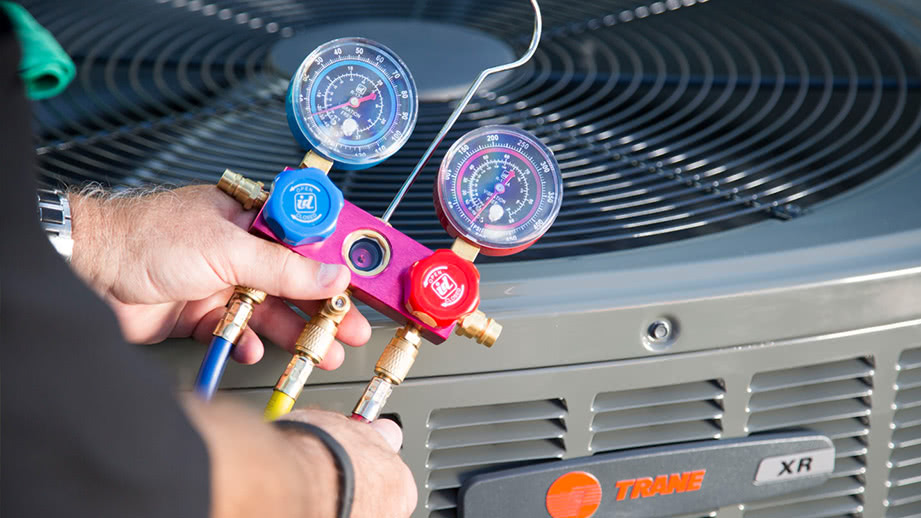Innovative HVAC Systems for Small Living Spaces

Within the contemporary society, as urban living spaces are becoming progressively constrained, seeking effective HVAC solutions for compact apartments has become a requirement. Knowing how HVAC functions and the way it works can empower tenants and homeowners alike to carry out knowledgeable decisions about their climate control and cooling needs. With the right direction, small apartment dwellers can optimize their comfort while also cutting energy bills and enhancing internal atmosphere.
An effective HVAC system is key in keeping a cozy living space, particularly in tiny spaces that often face specific difficulties. From typical issues that might arise to upkeep tips for keeping a system running smoothly, this manual will offer valuable information designed for those living in cozy areas. Whether you are contemplating a new system or seeking to enhance your existing system, knowing how to select the suitable HVAC solution can create all the difference in your compact apartment.
Grasping HVAC Units
HVAC is an abbreviation for Heating, Ventilation, and Air Conditioning, which are essential components in maintaining the comfort and air quality of indoor spaces. These systems are engineered to regulate temperature, humidity, and air flow, ensuring a cozy environment throughout the calendar year. Whether it’s making your apartment warm in the winter or cool in the summer, grasping how HVAC systems function is important for taking informed decisions that influence your living environment.

At the center of an HVAC system are three major functions: heating, ventilation, and air conditioning. Heating systems warm the air, while air conditioning systems cool it back. Ventilation is responsible for the exchange of indoor air with fresh outdoor air, vital for sustaining good air quality. All component works together to create an effective and functional climate control system tailored to various needs and wants.
For tiny apartments, picking the right HVAC system can advance comfort without overwhelming the space. Options such as ductless mini-split systems or radiant floor heating provide innovative solutions that increase efficiency while limiting footprint. Understanding the different HVAC technologies on the market allows residents to choose systems that not only meet their heating and cooling needs but also boost overall comfort and energy efficiency.
Enhancing HVAC Efficiency
To enhance the effectiveness of your HVAC system, it is essential to start with scheduled maintenance. This includes changing air screens, cleaning airways, and scheduling seasonal tune-ups. A clean system operates more effectively, lowering energy requirement and improving air freshness. Regular maintenance reviews can spot issues prior to they grow, guaranteeing your system operates without issues and extending its lifespan.
In addition to regular maintenance, look into switching to a programmable thermostat. Smart thermostats enable for exact temperature management and can adapt to your timing, optimizing energy utilization throughout the daytime. By programming your thermostat to lower temperatures during the night or when you are not home, you can significantly lower energy costs while ensuring comfort when it is needed most.
Another successful way to improve HVAC performance is through adequate insulation and sealing. Make sure that your home is well protected, giving special focus to windows, doors, and any areas where air might leak. Sealing openings can prevent conditioned air from overtaking out and outside air from entering, producing a more stable indoor environment and lower energy consumption. By integrating these methods, you can achieve considerable advancements in HVAC efficiency and cost benefits.
Advanced HVAC Solutions for Limited Spaces
In limited apartments, maximizing space efficiency is important, and new HVAC solutions have emerged to meet this need. Split-system ductless systems stand out as a favored option, providing both heating and cooling without the need for bulky ductwork. These systems consist of an outdoor compressor and one or more indoor units, allowing residents to control the temperature of specific rooms. This flexibility not only enhances comfort but also contributes to energy savings, as you can heat or cool only the in-use spaces.
Another advanced solution is the implementation of smart HVAC technology. Intelligent thermostats enable users to track and adjust their heating and cooling settings remotely, learning from daily habits to optimize energy consumption. By utilizing https://www.berkeys.com/fort-worth-air-conditioning/ like geofencing, these devices can automatically adjust temperatures based on whether anyone is home, thus reducing energy bills while maintaining a comfortable living environment. Additionally, many connected home systems can be connected to air purifiers, effectively improving indoor air quality in limited spaces.
Compact HVAC units are also gaining traction in compact apartments, offering an alternative for tenants who may not have the ability to install fixed systems. These units come in various forms, including window air conditioners and portable heat pumps, allowing for easy maneuverability and installation. They provide instant relief from extreme temperatures without requiring significant renovations, making them ideal for renters or those looking for flexible heating and cooling solutions in limited square footage.
